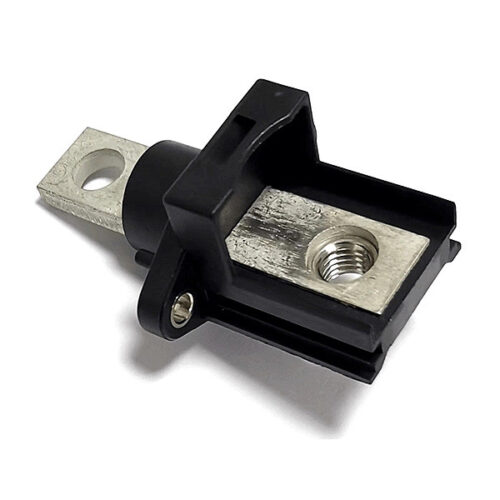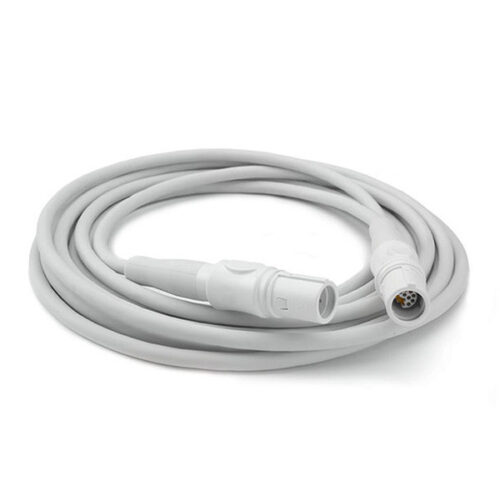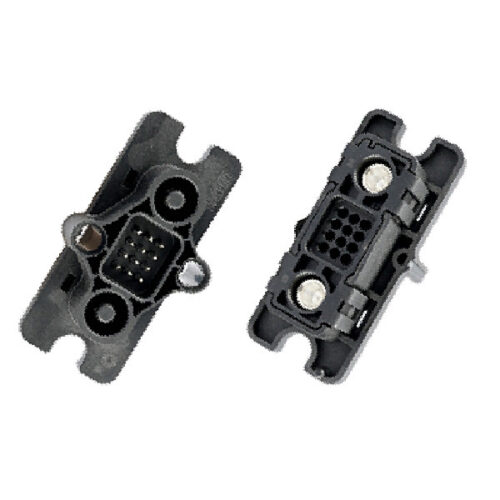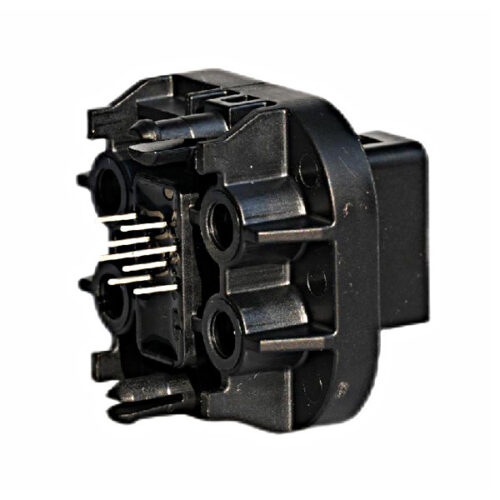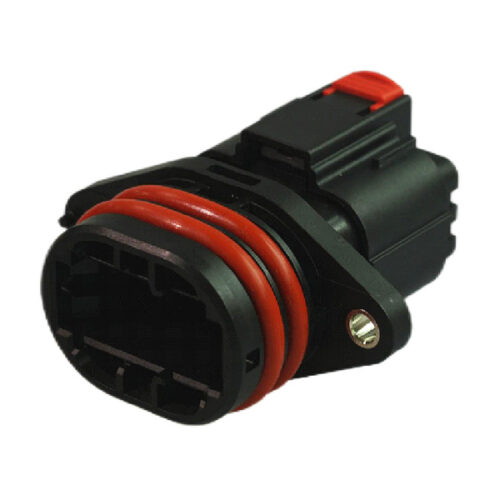Blogs & News
We are focus on automotive wiring harness & connectors technology.

The Application Value of 6-Cavity Connectors in Automotive Design
- Gvtong Electronic
- 48V board net connectors, 6 - cavity connectors factory, 6 - cavity connectors manufacturer, 6 - cavity connectors market, 6 - cavity connectors supplier, 6 - cavity connectors system, 6-cavity connectors, ADAS sensor connectors, Automated assembly connectors, automotive antenna connector, automotive coaxial connector, automotive data connector, automotive diagnostic connector, automotive high - frequency, Automotive high - frequency connector, automotive hybrid connector, automotive optical fiber connector, automotive power distribution, Automotive power distribution connector, Automotive temperature - resistant connector, automotive vibration - resistant, Automotive vibration - resistant connector, automotive waterproof connectors, Automotive-grade AEC-Q200 connectors, best 6-cavity connectors, best photovoltaic connectors for solar panels, China Photovoltaic Connectors ManufacturersElectric Vehicle EV Connector Supplier, Cost-effective automotive connectors, Fuel cell connectors, Halogen-free automotive connectors, Multi-variation connectors, Quick-fit automotive connectors, Recyclable material connectors, Redundant safety connectors, Thermal management connectors, V2X communication connectorsIn-cabin infotainment connectors, Wireless charging connectors
- No Comments
The Application Value of 6-Cavity Connectors in Automotive Design
In the rapidly evolving automotive industry, electrical systems are the backbone of modern vehicles, enabling everything from engine performance to advanced driver-assistance systems (ADAS). At the heart of these systems lie connectors—compact yet critical components that ensure reliable electrical communication. Among the various connector types, 6-cavity connectors stand out for their balance of functionality, compactness, and versatility. These connectors, designed to house six electrical terminals within a single housing, are widely used in automotive applications, from traditional internal combustion engine vehicles to cutting-edge electric and autonomous models. Their ability to support multiple circuits while withstanding harsh automotive environments makes them indispensable. This article explores the application value of 6-cavity connectors in automotive design, highlighting their technical advantages, key use cases, and role in shaping the future of mobility. By examining their benefits, challenges, and emerging trends, we demonstrate why 6-cavity connectors are a cornerstone of efficient and reliable automotive electrical systems.

What Are 6-Cavity Connectors?
A 6-cavity connector is a multi-pin electrical connector that accommodates six terminals within a single housing, typically used to connect wiring harnesses to various automotive components. Each “cavity” houses a single electrical contact, allowing the connector to manage multiple circuits simultaneously. These connectors are designed with robust features such as locking mechanisms to ensure secure connections, sealing gaskets for environmental protection, and durable materials like polyamide or PBT (polybutylene terephthalate) to withstand heat, vibration, and moisture.
Compared to smaller connectors (e.g., 2-cavity or 4-cavity), 6-cavity connectors offer greater circuit capacity, making them suitable for complex systems without the bulk of larger connectors (e.g., 8-cavity or 12-cavity). They often feature standardized designs, such as those compatible with industry standards like USCAR or ISO, ensuring interoperability across vehicle platforms. For example, a typical 6-cavity connector might include a male and female housing, with terminals rated for low to medium current (e.g., 5–15 amps per circuit), and may incorporate secondary locks for added reliability. Their compact yet versatile design makes them ideal for automotive applications where space, weight, and reliability are critical.
Key Applications in Automotive Systems
6-cavity connectors are ubiquitous in modern vehicles due to their ability to support multiple electrical functions within a compact footprint. They are commonly found in the following automotive systems:
- Sensor Systems: Sensors for temperature, pressure, oxygen, and proximity rely on 6-cavity connectors to transmit data to the vehicle’s electronic control unit (ECU). For instance, a throttle position sensor might use a 6-cavity connector to integrate power, ground, and signal lines for precise engine control.
- Lighting Systems: Exterior and interior lighting, including headlights, taillights, and ambient lighting, often employs 6-cavity connectors to manage multiple circuits (e.g., high beam, low beam, and turn signals) within a single connector.
- Infotainment and Connectivity: In-car entertainment systems, such as audio units and touchscreen displays, use 6-cavity connectors to handle power, data, and communication lines, ensuring seamless integration with user interfaces.
- Electric and Hybrid Vehicles: In electric vehicles (EVs) and hybrids, 6-cavity connectors are used in battery management systems (BMS) and charging interfaces to monitor cell status and manage low-voltage control circuits. Their compact size is particularly valuable in space-constrained EV designs.
- Wiring Harnesses: 6-cavity connectors are integral to automotive wiring harnesses, serving as junction points that connect various subsystems. For example, a harness for an engine compartment might use a 6-cavity connector to link fuel injectors, ignition coils, and sensors to the ECU.
A practical example is their use in a mid-sized sedan’s engine bay, where a 6-cavity connector might integrate signals from the mass airflow sensor, coolant temperature sensor, and throttle body into a single, weatherproof connection. This versatility makes 6-cavity connectors a go-to choice for automotive engineers seeking to optimize electrical architecture.
Advantages of 6-Cavity Connectors in Automotive Design
The widespread adoption of 6-cavity connectors in automotive design stems from their numerous advantages:
- Compact Size and Space Efficiency: With vehicles incorporating thousands of electrical connections, space is at a premium. 6-cavity connectors strike a balance between circuit capacity and physical size, allowing designers to minimize wiring harness bulk while supporting multiple functions. This is especially critical in compact cars and EVs, where space optimization is paramount.
- Reliability in Harsh Environments: Automotive connectors must endure extreme temperatures (-40°C to 125°C), vibrations, and exposure to moisture, oil, and chemicals. 6-cavity connectors are typically sealed to IP67 or higher standards, ensuring resistance to dust and water ingress. Their robust locking mechanisms prevent disconnection during vehicle operation.
- Cost-Effectiveness: By consolidating six circuits into a single connector, manufacturers reduce material and assembly costs compared to using multiple smaller connectors. Standardized designs also enable economies of scale, as suppliers like TE Connectivity and Molex produce 6-cavity connectors in high volumes.
- Flexibility: 6-cavity connectors support a range of wire gauges and terminal types, making them adaptable to various applications, from low-current sensor signals to medium-current lighting circuits. This flexibility simplifies design and inventory management for automakers.
For example, in a hybrid vehicle’s battery management system, a 6-cavity connector might handle voltage monitoring, temperature sensing, and communication signals, reducing the need for multiple connectors and streamlining assembly. These advantages make 6-cavity connectors a preferred choice for balancing performance, cost, and reliability.
Challenges and Limitations
Despite their benefits, 6-cavity connectors have limitations that designers must consider:
- Limited Current Capacity: 6-cavity connectors are typically designed for low to medium-current applications (e.g., up to 15 amps per circuit). High-power systems, such as electric motor drives or fast-charging circuits in EVs, require larger connectors with higher current ratings.
- Compatibility Issues: While many 6-cavity connectors adhere to industry standards, proprietary designs or non-standard pin configurations can create compatibility challenges, especially when integrating components from different suppliers.
- Maintenance Complexity: In service scenarios, diagnosing faults in a 6-cavity connector can be more complex than with single-circuit connectors, as technicians must test multiple circuits within a single housing. Improper handling during repairs can also damage seals or locking mechanisms.
To mitigate these challenges, designers often pair 6-cavity connectors with diagnostic tools and ensure compatibility through standardized interfaces. For high-power applications, they may opt for specialized connectors while reserving 6-cavity connectors for control and sensing functions.
Technological Trends and Innovations
The automotive industry is undergoing a transformation driven by electrification, autonomous driving, and connectivity, and 6-cavity connectors are evolving to meet these demands. Key trends include:
- Smart Vehicle Integration: As vehicles incorporate more ADAS and autonomous features, 6-cavity connectors are used in radar, LiDAR, and camera systems to transmit high-speed data alongside power and control signals. Their compact design supports the dense electronics of self-driving cars.
- Advanced Materials: Manufacturers are developing 6-cavity connectors with high-temperature plastics and corrosion-resistant coatings to meet the demands of EVs, where thermal management is critical. For instance, connectors rated for 150°C are becoming common in battery packs.
- Electrification Support: With the rise of EVs, 6-cavity connectors are being optimized for low-voltage control circuits in high-voltage systems, such as those managing thermal runaway detection in batteries.
- Miniaturization: Advances in connector design are reducing the size of 6-cavity connectors without sacrificing performance, aligning with the trend toward lighter, more efficient vehicles.
For example, companies like Aptiv are developing sealed 6-cavity connectors with enhanced shielding for electromagnetic interference (EMI), critical for the reliable operation of connected vehicles. These innovations ensure that 6-cavity connectors remain relevant in next-generation automotive designs.
Case Studies and Industry Examples
To illustrate the practical value of 6-cavity connectors, consider their use in popular vehicle models. In the Toyota Corolla, a 6-cavity connector might be used in the engine wiring harness to connect the ECU to sensors for air intake and fuel injection, ensuring reliable performance under varying conditions. Similarly, in the Tesla Model 3, 6-cavity connectors are employed in the battery management system to monitor cell health, balancing compactness with functionality.
Industry leaders like TE Connectivity and Molex offer 6-cavity connectors such as the Mini-Fit Jr. or Deutsch DT series, which are widely used in automotive applications. These connectors are praised for their ease of integration and robust performance, with suppliers reporting increased demand as vehicles become more electrified and connected. For instance, a 2023 report from Molex highlighted a 20% rise in demand for compact multi-cavity connectors in EV applications, underscoring their growing importance.
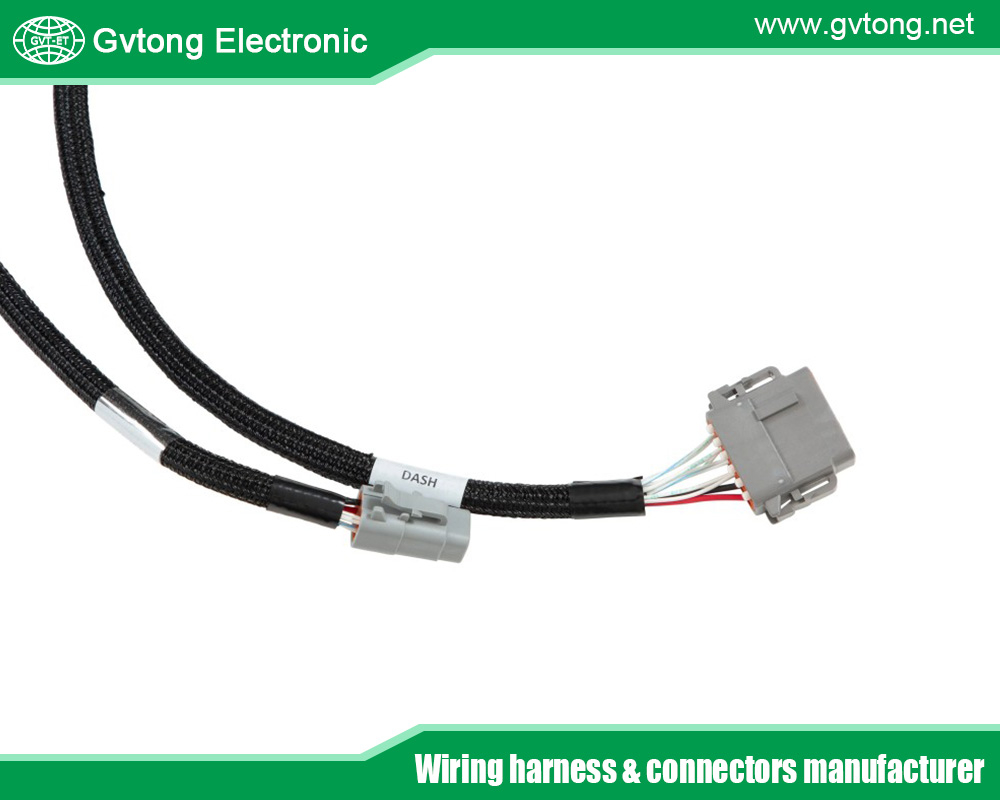
Conclusion
6-cavity connectors are a vital component in automotive design, offering a unique combination of compactness, reliability, and versatility. Their ability to support multiple circuits while withstanding the rigors of automotive environments makes them indispensable in applications ranging from sensor systems to EV battery management. Despite challenges like limited current capacity, their advantages in cost, space efficiency, and adaptability outweigh their drawbacks, especially when paired with emerging technologies like advanced materials and EMI shielding. As the automotive industry continues its shift toward electrification and autonomy, 6-cavity connectors will play an increasingly critical role in enabling smarter, more efficient vehicles. Automotive designers and engineers should continue to leverage these connectors, exploring innovative designs to meet the demands of tomorrow’s mobility solutions.
For more about the application value of 6-cavity connectors in automotive design, you can pay a visit to Gvtong at https://www.gvtong.net/ for more info.


